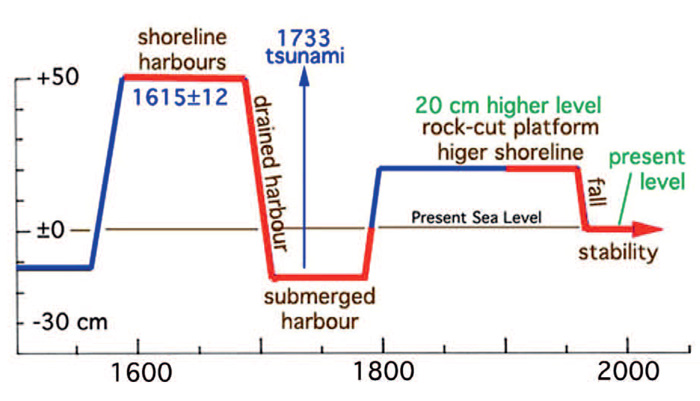| Follow @co2science |
Paper Reviewed
Mörner, N.-A. 2017. Coastal morphology and sea-level changes in Goa, India during the last 500 years. Journal of Coastal Research 33: 421-434.
One of the main fears about CO2-induced global warming is that temperatures will rise to such a degree that vast amounts of ice across the surface of the Earth will melt, thereby raising sea levels and potentially displacing millions of inhabitants who presently live in coastal regions. And in light of these concerns, scientists have been meticulously monitoring sea level rise, to see if there exists any indication that such a disaster is indeed imminent.
Fortunately, as revealed in a number of recent studies, proof of such an acceleration of sea level rise remains elusive (see the many reviews we have posted on this topic under the subheading of Sea Level here). The latest work to demonstrate that there is nothing unusual, unnatural or unprecedented about current rates of sea level rise comes from a paper written by sea level expert Nils-Axel Mörner (Mörner, 2017) and published in the Journal of Coastal Research.
For his analysis, Mörner utilized coastal morphology, stratigraphy, radiocarbon dating, archaeological remains, historical documents and tide gauge records to present "a detailed record of the changes in sea level in Goa, [India] over the last 500 years. This new record was then compared with ten other sites located within the Indian Ocean and evaluated for accuracy.
Results of this analysis revealed the oscillatory behavior of the Goa record (see figure below). Sea levels were lower than present in the early 1500s, then rose to a height of approximately 50 cm above the current stand in the 17th century. Thereafter, it dropped again to near-previous low levels in the 18th century before rising again to a height approximately 20 cm above present in the 19th and early 20th centuries. Most recently, during the majority buildup of CO2 in the atmosphere, the sea level at Goa fell by approximately 20 cm over the period 1955-1962, thereafter experiencing, in the words of Mörner, "a virtually stable level over the last 50 years."
As for the cause of the Goa sea level oscillations, Mörner says they are "primarily driven by deformations of the dynamic sea level and redistribution of water masses," including (1) changes in evaporation/precipitation that can lower/raise the sea level by 30-40 cm, (2) changes in ocean currents, (3) monsoon regime changes, (4) an east-west redistribution of water masses and (5) a low-high latitude interchange of water masses.
In commenting on the Goa record, Mörner says that its comparison with the ten other sites in the Indian Ocean yields "a surprisingly unified picture of the sea-level changes during the last 500 years" that "seems to lack ... any alarming sea-level rise in recent decades." Such findings would therefore appear to fly in the face of alarmist predictions of rapidly increasing rates of sea level rise in response to CO2-induced global warming. The scare stories are simply not materializing.

Figure 1. Summary of recorded changes in sea level during the last 500 years at Goa, India. Source: Mörner (2017).




